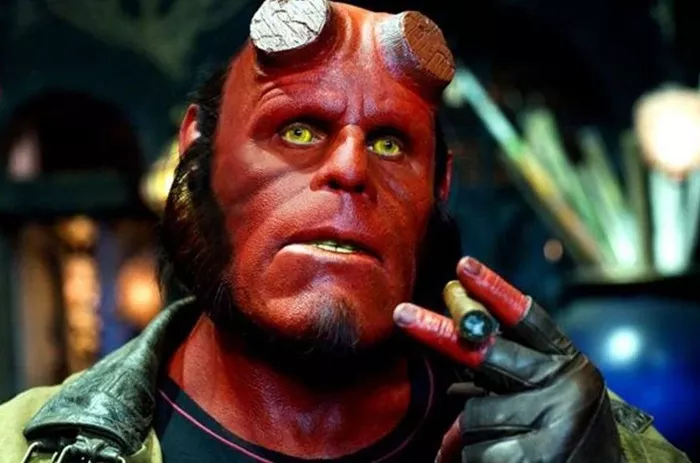Sixteen years after the release of Hellboy II: The Golden Army, director Guillermo del Toro has been looking back and sharing his thoughts on what makes the film so special. The sequel to his initial Hellboy installment follows the half-demon hero (Ron Perlman) and the Bureau for Paranormal Research and Defense as they attempt to thwart Prince Nuada’s plans to wipe out humanity. Renowned for its imaginative creature designs, Hellboy II received acclaim for its unique visuals and epic fantasy elements. The duology helped establish del Toro as a master of the fantasy genre, with Hellboy II even being nominated for an Academy Award for Best Makeup.
Del Toro’s Reflections on the Look of Hellboy II
On Bluesky, del Toro has been expressing his admiration for Hellboy II’s extensive use of practical effects. He described the film as a “makeup FX/puppet extravaganza,” emphasizing the numerous animatronic and elaborate makeup creations that brought his gothic vision to life. He also posited that this level of artistry might mark the end of an era, given the increasing shift in modern filmmaking towards CGI and digital effects.
The Significance of Practical Effects in Hellboy II’s Legacy
Del Toro’s comments about Hellboy II highlight the crucial role of practical effects in constructing immersive cinematic worlds. Practical effects like animatronics, puppets, and makeup were a defining feature of the first two Hellboy films, endowing them with a distinct visual identity. By collaborating with multiple effects studios and allowing each creature to have its moment in the spotlight, del Toro’s approach to Hellboy II demonstrated a commitment to tangible, handcrafted artistry that is seldom witnessed on such a scale nowadays.
The 2019 Hellboy reboot, directed by Neil Marshall and starring David Harbour as Hellboy, presented a sharp contrast. It relied heavily on computer-generated imagery to portray its supernatural elements. While CGI offered more flexibility in creature design and action sequences, many fans and critics observed that it lacked the charm and tactile quality of del Toro’s original films.
Del Toro’s remarks also point to a broader industry trend of favoring CGI over practical effects. Budget considerations often drive this shift, as CGI can simplify production schedules, especially for blockbuster franchises. However, this transition has sparked discussions about the loss of authenticity and creativity that practical effects bring. Del Toro’s recognition of Hellboy II as perhaps the last great display of creature designs reflects the ongoing transformation in how films are made, with the balance tilting more and more towards digital techniques.
Del Toro’s Revisiting of Hellboy II
Del Toro’s love for handcrafted creations is palpable in every scene of Hellboy II, from the intricate Troll Market designs to the Golden Army itself. This tangible craftsmanship imparted the movie with a sense of wonder and substance that CGI frequently fails to duplicate. In an era dominated by VFX-heavy productions, revisiting Hellboy II is like entering a time capsule of creativity.
Del Toro’s comments prompt a renewed appreciation for films that depend on practical effects, even as Hollywood continues to change. There are few recent projects that embody a filmmaking philosophy that values the tangible over the virtual, such as the chestbursting effects of Alien: Romulus. Del Toro’s wistfulness about Hellboy II: The Golden Army being the last of its kind reveals a bittersweet reality about filmmaking: the tools may vary, but the essence of the craft resides in the hands of creators like del Toro, who aim to make magic seem real.
Related content:
-
LUCY LAWLESS TEASES FUTURE OF “EVIL DEAD” FRANCHISE AND ANIMATED REVIVAL
-
CHRISTOPHER NOLAN’S NEXT FILM ADDS ANOTHER OSCAR WINNER TO CAST
-
STEPHEN KING ADAPTATION WITH 16% RT SCORE FINDS NEW STREAMING HOME

